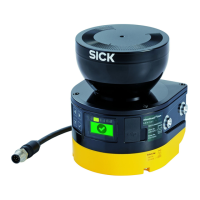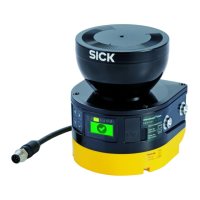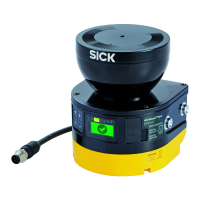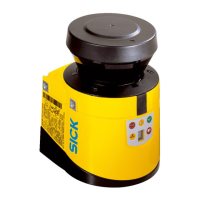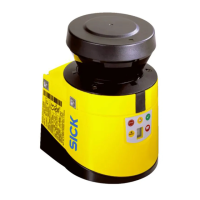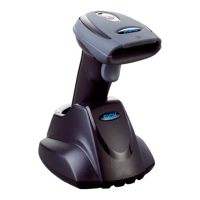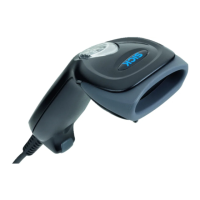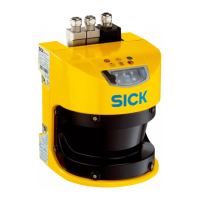DANGER
H
azard due to lack of effectiveness of the protective device
In the case of non-compliance, it is possible that the dangerous state of the machine
may not be stopped or not stopped in a timely manner.
1. Calculate the required minimum distance for your machine using the following
formulas and examples.
2. Take this calculation and the specifications in these instructions into account
when mounting the safety laser scanner.
3. Take this calculation and the specifications in these instructions into account
when configuring the safety laser scanner.
DANGER
H
azard due to lack of effectiveness of the protective device
Persons or parts of the body to be protected may not be recognized or not recognized in
time in case of non-observance.
b
Always mount the safety laser scanner so that it is impossible to reach around or
behind.
b
Provide suitable additional measures if necessary.
NOTE
T
he required minimum distance depends on the safety laser scanner’s set resolution.
Take account of the following notes when choosing the resolution:
•
If you choose a fine resolution, the protective field range is smaller and so the
protective field is only suitable for smaller hazardous points. But the required
minimum distance is smaller, so you can mount the safety laser scanner closer to
the hazardous point.
•
If you choose a coarser resolution, the protective field range is larger and so
the protective field is also suitable for larger hazardous points. But the required
minimum distance is larger, so you must mount the safety laser scanner further
away from the hazardous point.
Calculating minimum distance
T
he calculation of the minimum distance is based on international or national stand‐
ards and statutory requirements applicable at the place of installation of the machine.
If the minimum distance is calculated according to ISO 13855, then it depends on the
following points:
•
Machine stopping time (time interval between triggering the sensor function and
the end of the machine’s dangerous state, including signal propagation times in
the network and processing time in the control)
•
Response time of the protective device, see "Response times", page 186
•
Reach or approach speed of the person
•
Resolution (detection capability) of the safety laser scanner
•
Type of approach: orthogonal
•
Parameters specified based on the application
NOTE
A
dditional information is available in the ISO 13855 standard and in the Guidelines
Safe Machinery.
PROJECT PLANNING 4
8025424/1ELL/2022-01-21 | SICK O P E R A T I N G I N S T R U C T I O N S | microScan3 Pro I/O
43
Subject to change without notice
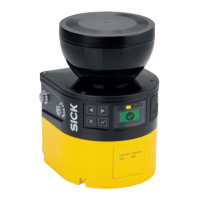
